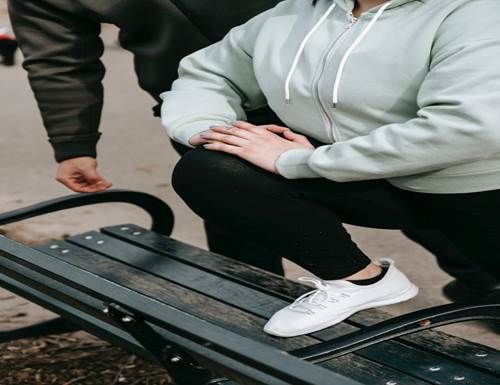Are you experiencing niggling knee pain due to a recent injury? Is there muscle strain present? Sore knees can happen for a myriad of reasons and in most cases is not something you need not worry about. Let’s take a closer look at some of the causes of knee pain and what you can do about it.
What is knee pain?
Knee pain can happen quite randomly or as a result of direct injury. It will usually feel tight, sore and inflamed – and can often be difficult to live with if the pain persists. Some common causes include knee dislocation due to a sporting injury, unexpected muscle strain, tendonitis or even arthritis. Depending on the severity of the pain, your medical specialist can determine the exact source of pain through a range of tests, X-rays and various exercise mobility movements.
What makes up the knee structure?
You will be surprised to know the knee is the largest joint in the body. It consists of bone, cartilage, ligament and tendon – holding everything in place where it should be. Given that we rely on our legs daily for walking and exercise, it’s easy to see why the knee region is more susceptible to injury and strain. To ensure your knees are in the best possible condition, its important to look at injury prevention, as well as different ways to manage knee pain better.
What are some of the direct causes of knee pain?
Tendonitis
Sore knees can be an indication of Tendonitis. This occurs when the tendon swells up, becoming inflamed and painful. It is most often caused by an injury to the area.
General Sprains, Strains & Tears
Knee pain can be caused by engaging in everyday, normal things such as walking, bending, exercise or bumping into things. Sprains, strains and tears can also be directly related to sports injuries or unexpected accidents.
Patellofemoral Pain Syndrome
Mostly affecting young children and adults, this type of pain is experienced behind or around the kneecap. It’s most obvious when doing physical things such as cycling, bending, walking uphill or flexing knees.
Osgood- Schlatter’s Disease
The bony lump below the kneecap is where pain is most often felt with this condition. It becomes very painful and swollen during and post exercise.
What are some of the best ways to manage knee problems?
· Get plenty of rest - particularly during the first 48 hours of experiencing knee pain
· Commence exercise therapy & encourage light movement of the knee area
· Avoid lifting heavy items until the pain has subsided
· Engage in low impact exercise such as cycling, swimming & stretching
· If you’re overweight, now might be a good time to shed some kilos and manage your weight better. Extra weight can be unnecessary strain on the knee area
· Using heat packs is a great way to minimise aches & pains. This can be in the form of a hot water bottle, infrared sauna, wheat bag or deep heat cream
· Ice packs can also be useful in treating temporary knee pain
· Invest in better quality footwear that supports your knees
· Take painkillers such as Paracetamol or Ibuprofen to manage the pain better
Mr Matt Barnes
Mr Matt Barnes is a fellowship trained Melbourne Orthopaedic Surgeon who specialises in the treatment of hip and knee conditions.
Mr Barnes is based in Melbourne and works privately at the Epworth Hospital in Richmond and Warringal Private Hospital in Heidelberg.
Each of these renowned institutions offers patients state of the art diagnostic and treatment facilities.
If you have any questions please feel free to contact us using the online form via our website and we will get back to you as soon as possible
